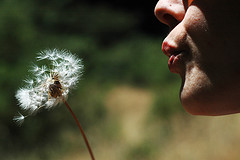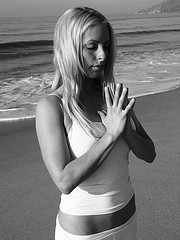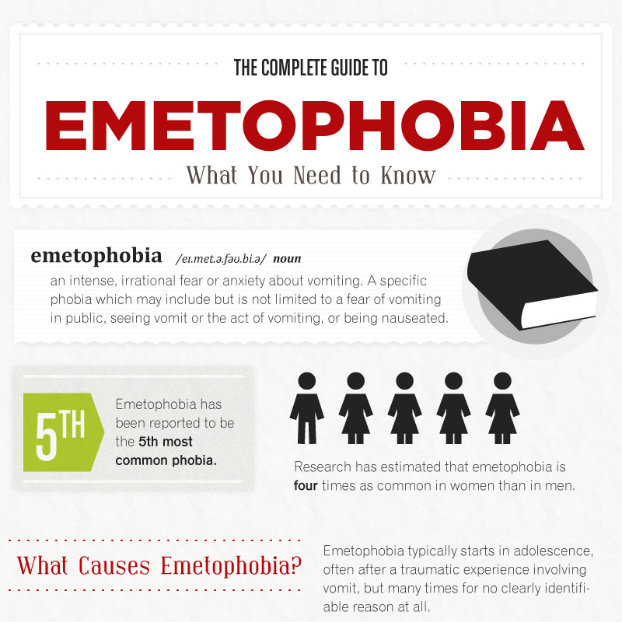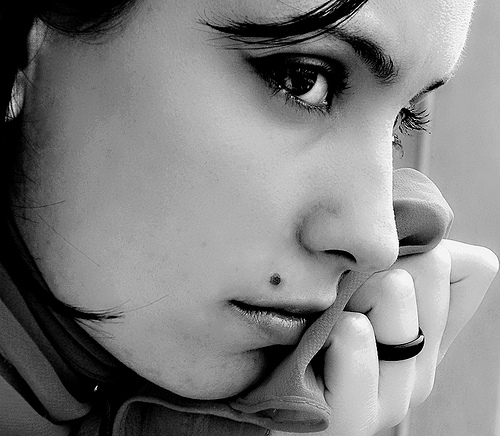 Your breath mimics your state of mind and, as anyone suffering from emetophobia knows, this is not always a good thing. Extreme anxiety can send both your breath and mind into a rapid state of panic, but you can take back control using a strategy we combine with many others as part of The Emetophobia Recovery System. One effective way to go about regaining control is with a thing called diaphragmatic breathing. While the name may sound fancy, the concept is quite simple. It’s also the way humans were designed and are supposed to breathe. But alas, we discovered shortcuts and fell into mounds of bad breathing habits. Re-learning how to breathe properly using the diaphragmatic method can help alleviate your emetophobia and related anxiety while giving your body the oxygen it needs to function at the optimum level. You will also discover that instead of your breath mimicking your frenzied state of mind you can turn the tables and make your frenzied mind mimic your calm, collected breath.
Your breath mimics your state of mind and, as anyone suffering from emetophobia knows, this is not always a good thing. Extreme anxiety can send both your breath and mind into a rapid state of panic, but you can take back control using a strategy we combine with many others as part of The Emetophobia Recovery System. One effective way to go about regaining control is with a thing called diaphragmatic breathing. While the name may sound fancy, the concept is quite simple. It’s also the way humans were designed and are supposed to breathe. But alas, we discovered shortcuts and fell into mounds of bad breathing habits. Re-learning how to breathe properly using the diaphragmatic method can help alleviate your emetophobia and related anxiety while giving your body the oxygen it needs to function at the optimum level. You will also discover that instead of your breath mimicking your frenzied state of mind you can turn the tables and make your frenzied mind mimic your calm, collected breath.
Diaphragmatic Breathing Explained
Diaphragmatic breathing is simply breathing with the use of the diaphragm, the dome-shaped muscle nestled beneath your lungs. Years of poor breathing habits may have largely ignored this fine muscle, making it weaker and less effective than it should be. The diaphragm is designed to move up and down, helping to empty and fill the lungs while providing a host of additional benefits. In addition to strengthening the diaphragm muscle, Cleveland Clinic says diaphragmatic breathing can lessen the breathing load off the organs and muscles usually stuck doing most of the work, slow your breathing rate with longer and slower breaths, and use less energy and effort in the simple act of breathing.
What Can It Do for Anxiety?
Using diaphragmatic breathing to reduce anxiety is where you get dabble with your breath controlling your mind, rather than the other way around. Check it out by examining what happens to your body when your emetophobia kicks into high gear or you suffer from a panic attack. When your body goes into “fight or flight” mode, it automatically reacts as if it is facing a real danger that requires immediate action. Your heart rate goes up, your digestive system shuts down and your endocrine system starts churning out the high-powered cortisol and adrenaline that give you the energetic boost you need to fight or flee. Your breathing also speeds up, thereby increasing your oxygen levels and lowering your CO2 levels. Here’s where hyperventilation can come in.
“People will begin to hyperventilate because they’re anxious, and then as the carbon dioxide levels drop, the hyperventilation makes the anxiety worse,” Harvard Medical School assistant professor Robert Goisman, M.D., told Yoga Journal. “It causes a lot of fear. They feel like they’re having a heart attack or a stroke, and unless a person understands that slowing down the breath will help, instinct is going to tell him or her to keep up the fast-paced panting.”
Your mind and breath can reduce the anxiety and even quash the panic symptoms if you let them overrule your instincts. Your breathing will then tell your body to quit kicking out all that cortisol and adrenaline as no dangerous situation needs immediate attention. Slowing down the breath can also help reduce anxiety even when you’re not in the midst of a panic attack, provided you remember to slow down and breathe. It may take a lot of practice to even remind yourself you can regain control with your breath, especially if anxiety has been brewing and growing over time. “Anxiety builds up over years,” said yoga teacher Barbara Benagh, “so by the time it blossoms into panic, it’s going to take some time to deconstruct.”
Research Supporting Claims
 A big plug for diaphragmatic breathing’s ability to alleviate anxiety came from an Australian study that looked at the breathing’s effect on musicians. The study, published online at PLOS One, monitored the heart rates and gauged anxiety levels of 46 musicians who were told to play a difficult piece after a scant five minutes of preparation. The 46 individuals were then divided into three groups, each of which had a 30 minute break before they would play a different piece of equally difficult music. One group was told to practice breathing exercises for that 30 minutes, another group was given biofeedback in conjunction with breathing exercises and the third group was told just to read and relax. Lo and behold, the groups that practiced breathing exercises for the half-hour prior to their performance were less anxious than they had been prior to the first performance, a fact backed up by the heart rate monitors. While biofeedback has often joined diaphragmatic breathing for relieving anxiety, this study illustrated that the breathing alone did the trick for kicking out high levels of stress. Another study, this one published in the Journal of Consulting and Clinical Psychology, pitted a type of breathing therapy against cognitive behavioral therapy to see which was more effective for treating panic disorder. Another lo and behold moment was had when it was found the breathing therapy was more effective for immediate relief from both panic symptoms and hyperventilation. The specific type of breathing therapy used is called CART, officially known as Capnometry-Assisted Respiratory Training. The technique involves the use of a portable capnometer, which measures a person’s CO2 levels, coupled with slow but shallow breathing. Although shallow breathing is typically not the best way to breathe as a habit, researchers found it is helpful for reversing hyperventilation. Hyperventilation is a state of rapid or deep breathing which results in low levels of CO2 and can actually be compounded by more deep breathing. The CART study instead found CO2 levels went up and panic levels went down when breathing exercises were brought into play. As you may know from experience, panic attacks can create terror from the symptoms alone, especially the shortness of breath and dizziness linked to hyperventilation. Slow, shallow breathing offered immediate relief from panic symptoms, something CBT was not able to do. This does not mean CBT is not useful for treating emetophobia; our Emetophobics Guide to Cognitive Behavioral Therapy outlines how beneficial it can be for treating vomit phobia and vomit fears. If you’re looking for immediate relief from a panic attack, however, controlled breathing looks like it’s the way to go. It can also be the way to go to get the same relief as some medications can bring. A study published in the Journal of the American Medical Association found slow, steady diaphragmatic breathing techniques to be as effective for reducing anxiety as the antidepressant imipramine.
A big plug for diaphragmatic breathing’s ability to alleviate anxiety came from an Australian study that looked at the breathing’s effect on musicians. The study, published online at PLOS One, monitored the heart rates and gauged anxiety levels of 46 musicians who were told to play a difficult piece after a scant five minutes of preparation. The 46 individuals were then divided into three groups, each of which had a 30 minute break before they would play a different piece of equally difficult music. One group was told to practice breathing exercises for that 30 minutes, another group was given biofeedback in conjunction with breathing exercises and the third group was told just to read and relax. Lo and behold, the groups that practiced breathing exercises for the half-hour prior to their performance were less anxious than they had been prior to the first performance, a fact backed up by the heart rate monitors. While biofeedback has often joined diaphragmatic breathing for relieving anxiety, this study illustrated that the breathing alone did the trick for kicking out high levels of stress. Another study, this one published in the Journal of Consulting and Clinical Psychology, pitted a type of breathing therapy against cognitive behavioral therapy to see which was more effective for treating panic disorder. Another lo and behold moment was had when it was found the breathing therapy was more effective for immediate relief from both panic symptoms and hyperventilation. The specific type of breathing therapy used is called CART, officially known as Capnometry-Assisted Respiratory Training. The technique involves the use of a portable capnometer, which measures a person’s CO2 levels, coupled with slow but shallow breathing. Although shallow breathing is typically not the best way to breathe as a habit, researchers found it is helpful for reversing hyperventilation. Hyperventilation is a state of rapid or deep breathing which results in low levels of CO2 and can actually be compounded by more deep breathing. The CART study instead found CO2 levels went up and panic levels went down when breathing exercises were brought into play. As you may know from experience, panic attacks can create terror from the symptoms alone, especially the shortness of breath and dizziness linked to hyperventilation. Slow, shallow breathing offered immediate relief from panic symptoms, something CBT was not able to do. This does not mean CBT is not useful for treating emetophobia; our Emetophobics Guide to Cognitive Behavioral Therapy outlines how beneficial it can be for treating vomit phobia and vomit fears. If you’re looking for immediate relief from a panic attack, however, controlled breathing looks like it’s the way to go. It can also be the way to go to get the same relief as some medications can bring. A study published in the Journal of the American Medical Association found slow, steady diaphragmatic breathing techniques to be as effective for reducing anxiety as the antidepressant imipramine.
Overcoming Poor Breathing Habits
 The first step for transforming your poor breathing habits into healthy ones is to be aware of the poor ones when they come into play. You may be engaging in bad breathing habits throughout your day, not just when panic attacks and anxiety stemming from your emetophobia kick in. You can spot-check your own breathing habits at any time to discern if your usual mode of breathing may be detrimental to both your anxiety levels and your overall well-being. Common Bad Breathing Habits Shallow breathing: Even if your belly moves when you breathe, you could still be a shallow breather if your ribs don’t budge an iota. Diaphragmatic breathing, on the other hand, involves a slight and easy expansion of your lower ribs. Upper-chest breathing: This type of breathing moves your chest as you inhale and exhale but doesn’t budge your abdomen one iota. Diaphragmatic breathing takes the breath deep down into your abdomen, which is how it got its nickname of belly breathing. Mouth breathing: If you notice your mouth is always open and your nose is largely ignored, your may be guilty of mouth breathing. Inhalations through the nose and exhalations through your mouth are ideal for diaphragmatic breathing. Breath holding: Especially evident while exercising, this poor breathing habit involves holding your breath after you inhale. Those who are particularly adept at it may even have to struggle a bit to begin an exhalation. Diaphragmatic breathing can fix this by helping you inhale and exhale in an even, steady flow with no pauses after inhalation. Overbreathing: While diaphragmatic breathing gives you a steady, even flow of breath, that flow should include an inhalation that is slightly shorter than your exhalation. Overbreathers typically have an inhalation that is the same length as their exhalation, something you can spot check by counting how long each lasts. Ideal breathing consists of an inhalation that lasts to a count of three and an exhalation that lasts to the count of six. Reverse breathing: This bad habit moves the diaphragm in the opposite direction that it’s supposed to move. Ideal breathing will have your diaphragm move down as you inhale and up as you exhale. Reverse breathing does exactly the opposite. Spot-check for reverse breathing by noting if your abdomen rises or flattens when you inhale. If it rises as you inhale, you’re breathing correctly. If it flattens as you inhale, you have a case of reverse breathing going on.
The first step for transforming your poor breathing habits into healthy ones is to be aware of the poor ones when they come into play. You may be engaging in bad breathing habits throughout your day, not just when panic attacks and anxiety stemming from your emetophobia kick in. You can spot-check your own breathing habits at any time to discern if your usual mode of breathing may be detrimental to both your anxiety levels and your overall well-being. Common Bad Breathing Habits Shallow breathing: Even if your belly moves when you breathe, you could still be a shallow breather if your ribs don’t budge an iota. Diaphragmatic breathing, on the other hand, involves a slight and easy expansion of your lower ribs. Upper-chest breathing: This type of breathing moves your chest as you inhale and exhale but doesn’t budge your abdomen one iota. Diaphragmatic breathing takes the breath deep down into your abdomen, which is how it got its nickname of belly breathing. Mouth breathing: If you notice your mouth is always open and your nose is largely ignored, your may be guilty of mouth breathing. Inhalations through the nose and exhalations through your mouth are ideal for diaphragmatic breathing. Breath holding: Especially evident while exercising, this poor breathing habit involves holding your breath after you inhale. Those who are particularly adept at it may even have to struggle a bit to begin an exhalation. Diaphragmatic breathing can fix this by helping you inhale and exhale in an even, steady flow with no pauses after inhalation. Overbreathing: While diaphragmatic breathing gives you a steady, even flow of breath, that flow should include an inhalation that is slightly shorter than your exhalation. Overbreathers typically have an inhalation that is the same length as their exhalation, something you can spot check by counting how long each lasts. Ideal breathing consists of an inhalation that lasts to a count of three and an exhalation that lasts to the count of six. Reverse breathing: This bad habit moves the diaphragm in the opposite direction that it’s supposed to move. Ideal breathing will have your diaphragm move down as you inhale and up as you exhale. Reverse breathing does exactly the opposite. Spot-check for reverse breathing by noting if your abdomen rises or flattens when you inhale. If it rises as you inhale, you’re breathing correctly. If it flattens as you inhale, you have a case of reverse breathing going on.
How to Get Started with Diaphragmatic Breathing
 You may have already begun a new breathing habit by going through any existing bad breathing habits. You can also try a couple of simple breathing exercises outlined by Cleveland Clinic to double-check you’re getting the diaphragmatic technique right. Exercise One: Lying Down
You may have already begun a new breathing habit by going through any existing bad breathing habits. You can also try a couple of simple breathing exercises outlined by Cleveland Clinic to double-check you’re getting the diaphragmatic technique right. Exercise One: Lying Down
- Lie on your back with one pillow under your head and another supporting your knees so they are slightly bent. Place one hand on your abdomen, right below your rib cage, and your other hand on your chest.
- Slowly inhale through your nose to the count of three, feeling your abdomen rise and press against your hand. The hand on your chest should feel no movement.
- Purse your lips and exhale through your mouth as you tighten your abdominal muscles and let them flatten as you expel the air from your lungs. The hand on your chest should still feel no movement.
Exercise Two: Sitting up
- Sit in a chair with your back straight, your knees bent, your feet flat on the floor and your head, neck and shoulders relaxed. Put your hands in the same positions as you did while lying down: one hand right below your rib cage on your abdomen and the other flat on your chest.
- Inhale slowly through your nose, feeling your abdominal muscles rise and push against your lower hand. The hand on your chest should feel no movement.
- Purse your lips and breathe out through your mouth, tightening your abdominal muscles and letting them flatten as you exhale. The hand on your chest should feel no movement.
Cleveland Clinic recommends doing these exercises for at least five minutes about three times a day until diaphragmatic breathing becomes second nature. You can even ramp it up a bit and give your diaphragm an even stronger workout by placing a book on your abdomen while doing the exercises lying down.
Quick Diaphragmatic Breathing Tips
Since you can’t very well just break into diaphragmatic breathing exercises at any given time throughout your day, Yoga Journal offers an additional slate of quick tips to ensure you continue to reinforce your healthy new breathing habit. These tips can be especially useful in a pinch when you find that familiar anxiety creeping up or that panic barging its way in.
- Keep your chest and upper body quiet, consciously relaxing your throat, shoulders, neck and jaw
- Elongate your exhalations, making them last to the count of six while inhales last to the count of three
- Pause briefly after exhalation, enjoying what can be a refreshing moment of suspended serenity
- Allow your entire body to breathe, with the breath gently moving your belly and undulating your spine. “This offers a mini-massage for the muscles and organs of the whole body,” Yoga Journal notes, “and turns each breath into a soothing melody that further calms and quiets every cell within.”
- Pay attention to the sound your breathing makes as you inhale and exhale, using a tip offered by yoga instructor Benagh: “I tell my students to just let the breath relax them, then to listen to its rhythms and to hear its soothing ocean sounds,” she says. “Once you surrender to the natural sounds of your inhalation and exhalation, you begin to invite a breath that is not fearful, that begins to calm the body and to lower the heart rate and blood pressure.”
In other words, you begin to really and truly breathe your way through anxiety.
SOURCES:
- http://www.yogajournal.com/lifestyle/894
- http://www.yogajournal.com/basics/1468
- http://www.psmag.com/health/performance-anxiety-take-a-deep-breath-47882/
- http://blog.smu.edu/research/2010/12/16/a-new-breathing-therapy-reduces-panic-and-anxiety-by-reversing-hyperventilation/
- http://www.yogajournal.com/practice/218
- http://cas.umkc.edu/casww/brethexr.htm
Photo Credit: ilmungo, philos from Athens, Phil W Shirley,Kukhahn Yoga





